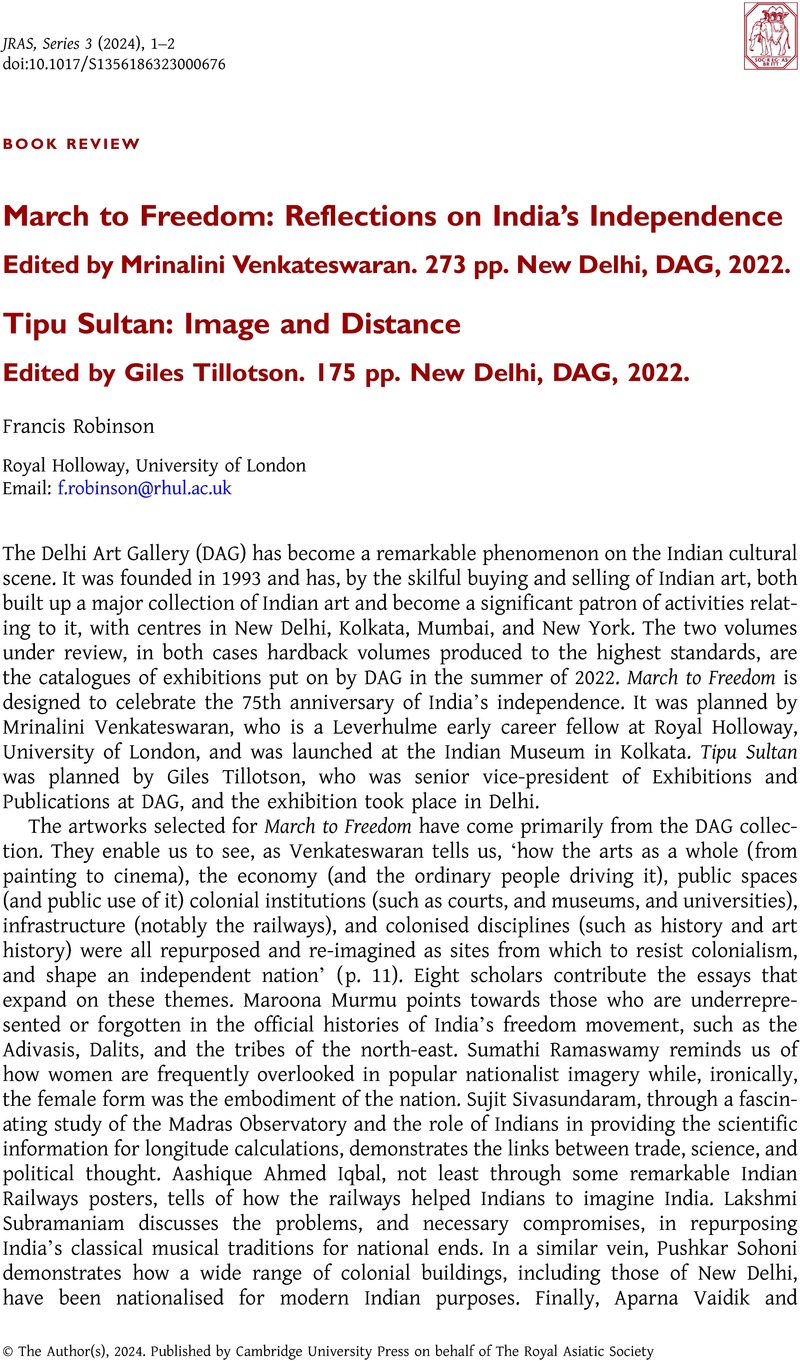No CrossRef data available.
Article contents
March to Freedom: Reflections on India's Independence Edited by Mrinalini Venkateswaran. 273 pp. New Delhi, DAG, 2022. - Tipu Sultan: Image and Distance Edited by Giles Tillotson. 175 pp. New Delhi, DAG, 2022.
Review products
March to Freedom: Reflections on India's Independence Edited by Mrinalini Venkateswaran. 273 pp. New Delhi, DAG, 2022.
Tipu Sultan: Image and Distance Edited by Giles Tillotson. 175 pp. New Delhi, DAG, 2022.
Published online by Cambridge University Press: 02 April 2024
Abstract
An abstract is not available for this content so a preview has been provided. Please use the Get access link above for information on how to access this content.

- Type
- Book Review
- Information
- Journal of the Royal Asiatic Society , Volume 35 , Special Issue 1: The 14th century Chinggisid Crisis , January 2025 , pp. 243 - 244
- Copyright
- Copyright © The Author(s), 2024. Published by Cambridge University Press on behalf of The Royal Asiatic Society



